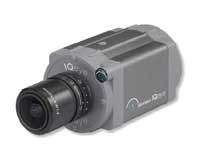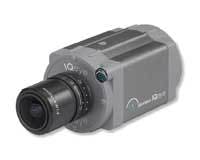Network cameras are having an impact and fast becoming mainstream.
The latest craze to hit the security surveillance industry, formerly known as the closed-circuit television (CCTV) industry, is Internet Protocol (IP) video. And it’s hitting quite hard.
A look at general industry trends suggests that IP video is having a significant impact on nearly every segment of the industry, including manufacturers, distributors, integrators and end users. It’s also opening up new opportunities for network integrators and system installers.
Bored and wanting more
Anyone who has been tracking the development of CCTV technology during the last 15 years deserves credit for a wonderful attention span. the technology has been incredibly conservative, even boring, with respect to innovation and change. One of the more notable technologies was the digital video recorder (DVR), which was introduced in the mid 1990s. These DVRs were, for the most part, PCs with video capture cards dressed up to look industrial and were sold as an alternative to VCRs.
DVRs were initially made to look and feel like their multiplexer and VCR predecessors. The effort was not driven so much by what was best for the end user but by the reality that manufacturers sold to traditional CCTV dealers who were already trained on these older products. Since the manufacturers were not motivated to find new channels, they designed the products to fit their existing channels.
These same manufacturers often built proprietary systems that only worked with, or worked best with, their other products. They then trained a select few security dealers to install, program and support their products, forcing end users to either buy complete systems from one manufacturer or piece a system together at their peril. As a result, there was little regional competition among security dealers, and precious little choice for end users. Such a captive, non-dynamic market resulted in high-priced DVRs that offered a number of improvements over VCR technology, but still left the end user wanting more.
Video on demand
In the late 1990s, the network camera, sometimes referred to as an IP camera, hit the market. These were not Web cameras that had to be connected to PCs. Network cameras were stand-alone network devices that streamed video over the network to whatever, or whoever, requested it.
Initially, market penetration for network cameras met with technical challenges, such as bandwidth consumption and reliability. In time, however, bandwidth became increasingly available, and higher-performance network cameras, such as the IQeye, emerged. They were different from their predecessors in that they were built on robust operating systems and provided stable performance in the most challenging network environments.
Having overcome initial technical challenges, network camera manufacturers turned to more ambitious goals: finding the right channel to sell and support their products. From about 2000 onward, security dealers installed the vast majority of security surveillance systems; so, they were an obvious place to start.
But while some security dealers seemed willing to embrace the newer technology, most showed little interest. They already represented CCTV products that were reasonably stable, and they knew how to install them. And since they had few competitors, they also had a lot of control over pricing. In short, there was very little incentive to change, and the end user continued to suffer. The security dealers’ reluctance was further fueled by a lack of communication between end users’ IT and security professionals. When security managers were called upon to solve surveillance needs, they knew because of the prevalence of DVRs that they would need network support. So, they began to include the IT managers early on in the decision-making process.
Are we on the same page here?
Initially, security dealers would propose that the end user purchase what the dealers were familiar with: traditional, isolated CCTV systems that did not take advantage of the company’s existing networking infrastructure. This was simpler for the security dealer to install but provided the end user with only limited advantages over VCR technology. When challenged by the end user or a consultant, and at risk of losing a sale, the dealer might propose an alternate IP video system that would leverage the existing network.
When reviewing the IP video proposal, the IT manager would then ask simple questions about its impact on his company’s network. The security dealer, unfamiliar with the nuances of networking, would very often not provide satisfactory answers to the IT manager. Without good answers from the supposed “experts,” the IT manager would object to installing anything on the network that he didn’t clearly understand and couldn’t be properly prepared for.
Understandably, this didn’t make the security dealer very happy, and thus was born the unfair reputation of IT managers being stubborn and controlling. In truth, IT was simply asking for the information it needed to manage the networks properly. Because the dealer was unable to provide those answers, the situation often degenerated into a blame game.
Needless to say, selling network cameras into this same security channel posed another challenge for network camera manufacturers. As we saw with DVRs, this channel again lacked the motivation and the knowledge to change. Network camera manufacturers made an effort to educate the channel, but trying to teach IP networking to low-tech security dealers required more resources than the manufacturers possessed. To achieve their business goals, they had to look to other channels.
Compared to security dealers, IT integrators were a different story altogether. They already had the hard part taken care of-the networking. IT integrators had been installing IP networks for years. They understood how they worked and how to fix them when they were broken. They also knew how to install Category 5 cable and even configure wireless networks. They were trained on software, servers, storage and all the other components of networking.
An ideal match
IT integrators were the perfect partners for network camera makers trying to get their product to end users who were interested, but were not getting much encouragement from traditional security dealers. And what the IT integrators didn’t know was easy to teach.
As mentioned earlier, DVRs are, for the most part, PCs with video capture cards dressed up to look industrial by rack-mounting the PCs and changing the front panel. Within the PC resides storage capacity and software. The software lets you display lots of cameras at the same time, manage how video is recorded, provide record and playback capabilities, and even allow for video motion detection.
Not long after the introduction of network cameras, companies like Milestone Systems (www.milestonesys.com) and DVTel (www.dvtel.com) introduced software that could do everything the DVR could do, eliminating the need to buy expensive, custom PCs. You could simply buy the software, usually on a per-camera license, and run it on your existing PCs or servers. By now, IT integrators had mastered the IP network, PC, server, storage and video control software. All the network camera manufacturers needed to teach them was how to select lenses, point the cameras, begin recording, and select what type of housing to use.
Left with the choice of teaching security dealers the intricacies of IP networking or working with high-tech IT integrators on how to mount, point and focus a camera, it’s pretty clear which direction the network camera manufacturers would go.
Today, IP network cameras are fast becoming mainstream, and a number of security and IT industry analysts forecast that sometime between 2007 and 2009, sales of IP network cameras will surpass those of analog CCTV cameras. The expected rapid growth in demand for IP cameras can be attributed to a number of factors: IP networks are everywhere, digital storage is cheap, customers are demanding video quality greater than CCTV, and bandwidth has become quite affordable. Also, end users are getting more IT-savvy and IP network cameras have surpassed analog CCTV cameras in terms of resolution, frame-rate and advanced features.
Ripe for the picking
If you are an IT integrator who is considering adding IP video to your portfolio, consider that every network you have installed or every network you support is a potential customer. IP video represents an abundant, attractive market of low-hanging fruit that is perfect for the IT integrator’s existing skill set and customer base.
To get a piece of an IP surveillance market that is forecast to more than double between now and 2010, you simply need to:
• Find an established IP network camera manufacturer whose products are clearly differentiated from CCTV cameras, work reliably in all networking environments, and are well supported;
• Find network video recording (NVR) software that is suited to your installations;
• Identify reliable long-term network-based storage devices you wish to work with;
• Find a compatible camera housing that will work in your customers’ environment;
And learn how to focus a camera.PAUL BODELL is vice president of sales and marketing for IQinVision (www.iqeye.com). He can be reached at: [email protected]


